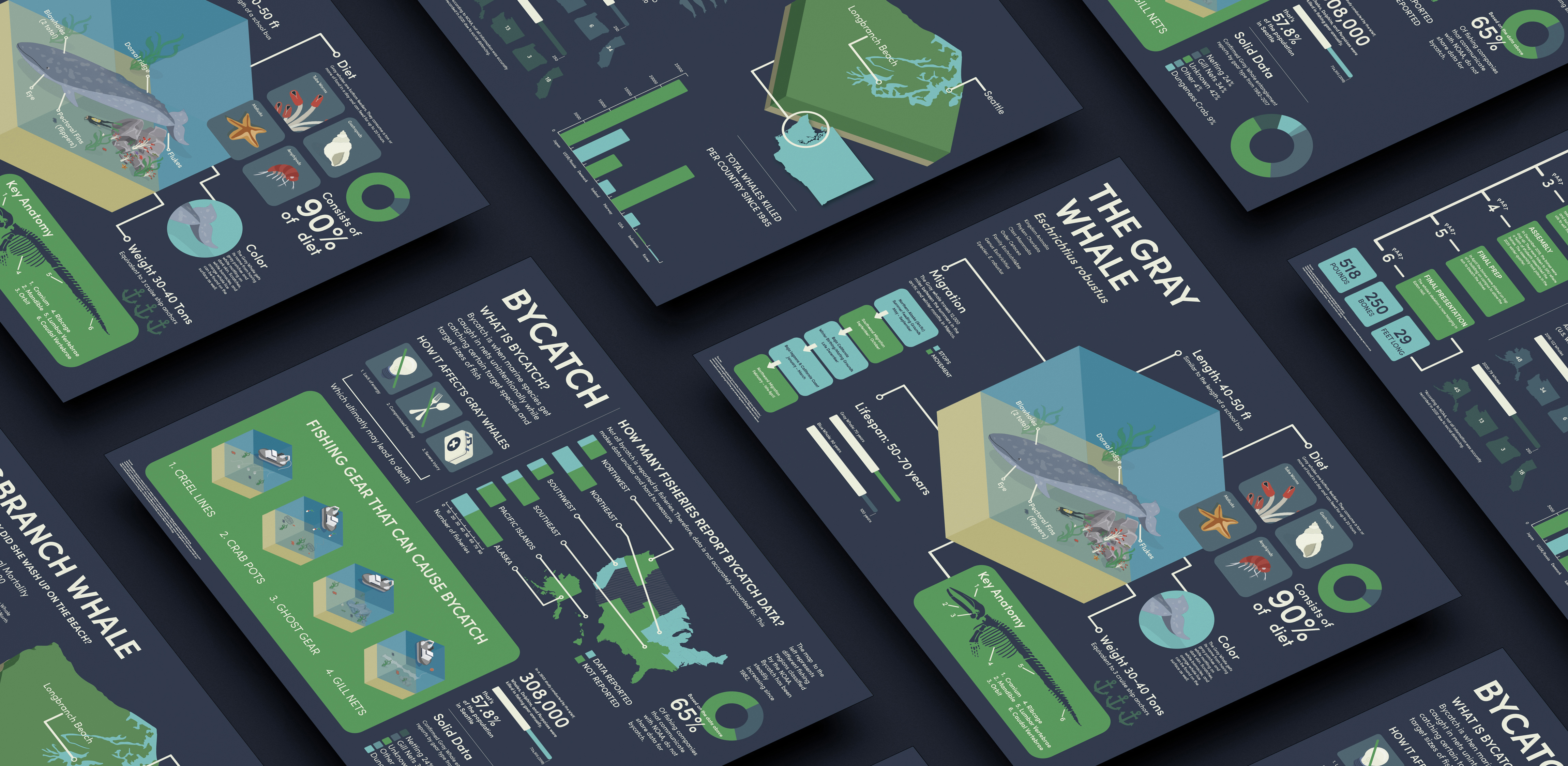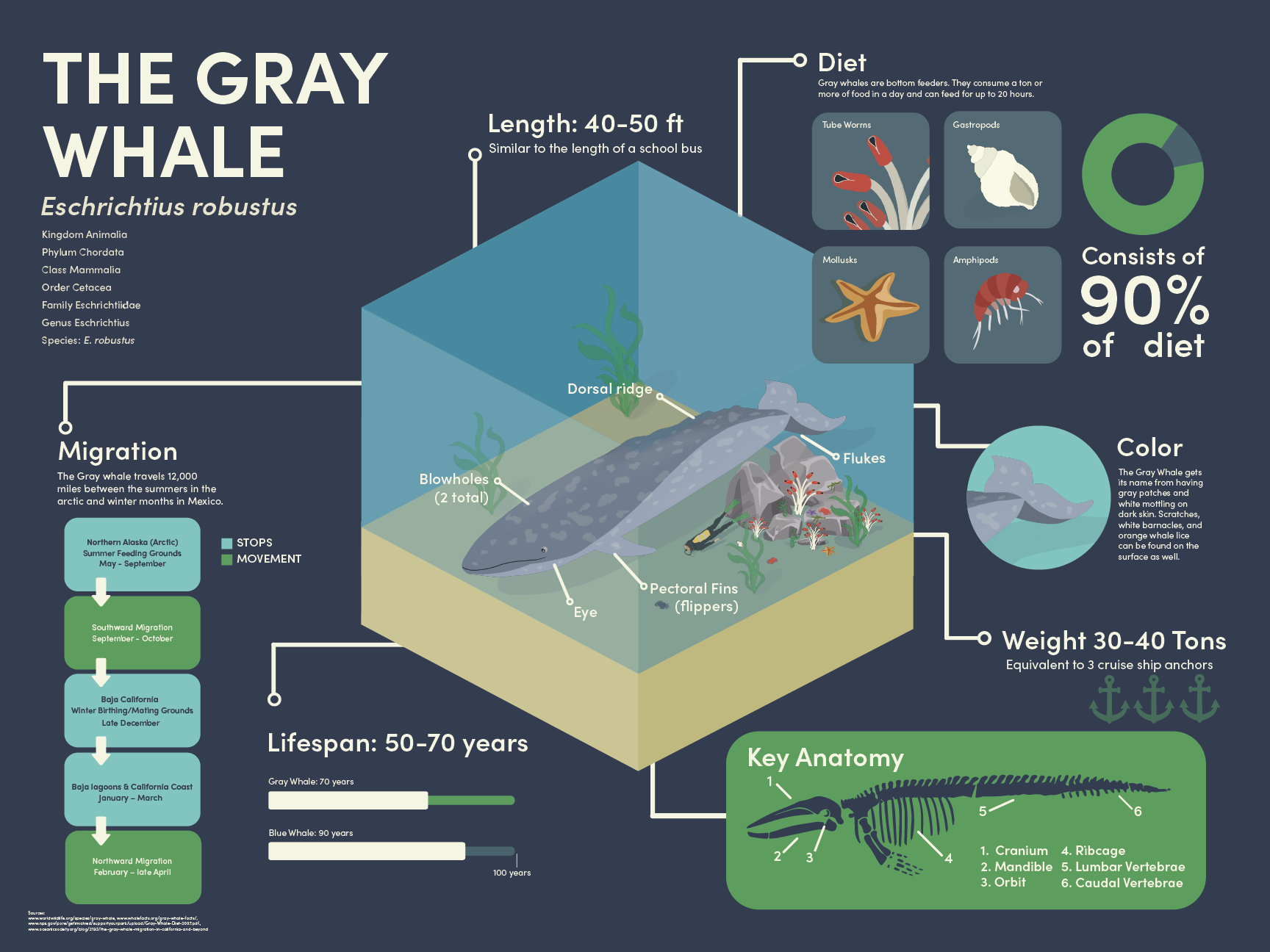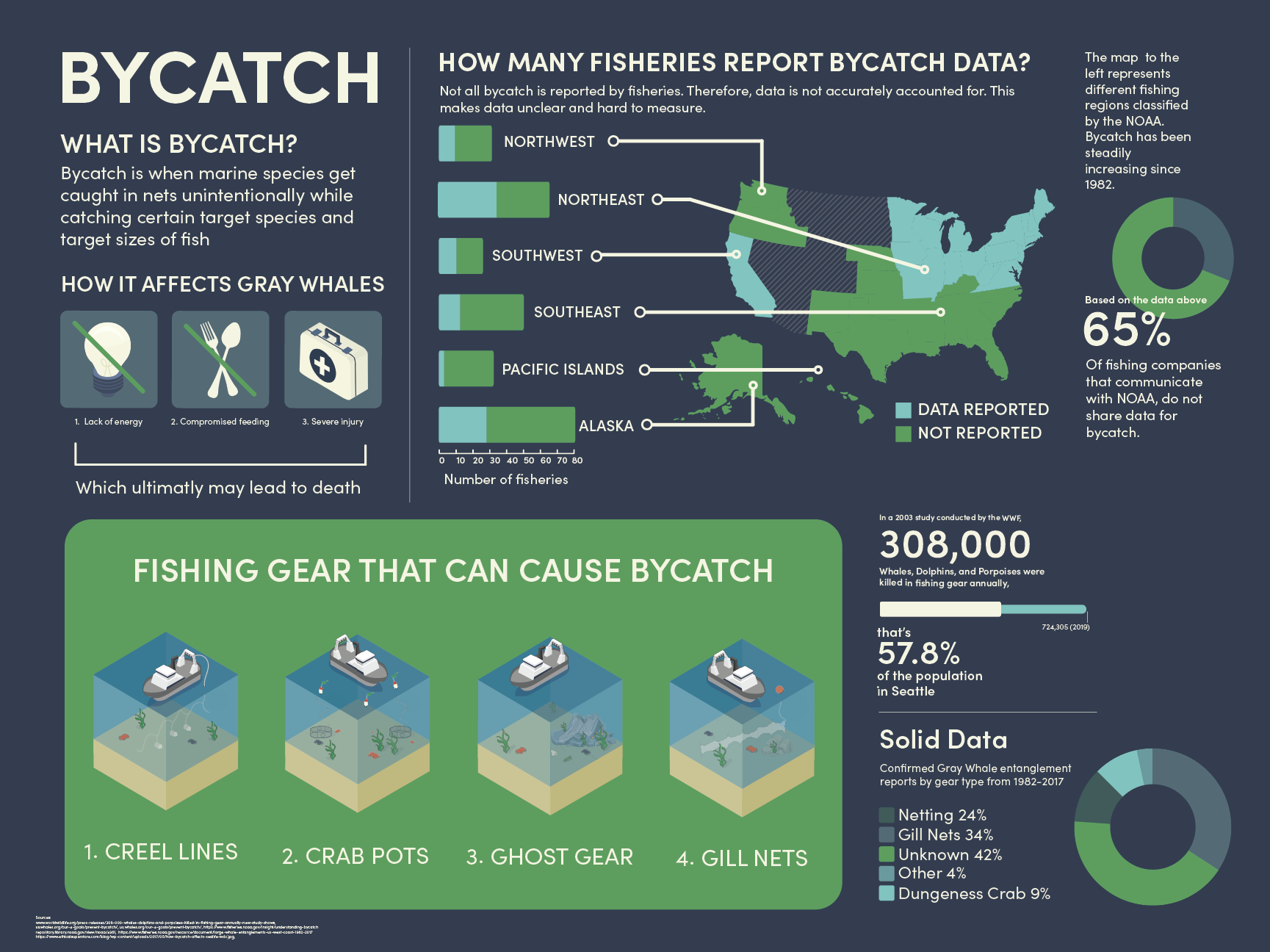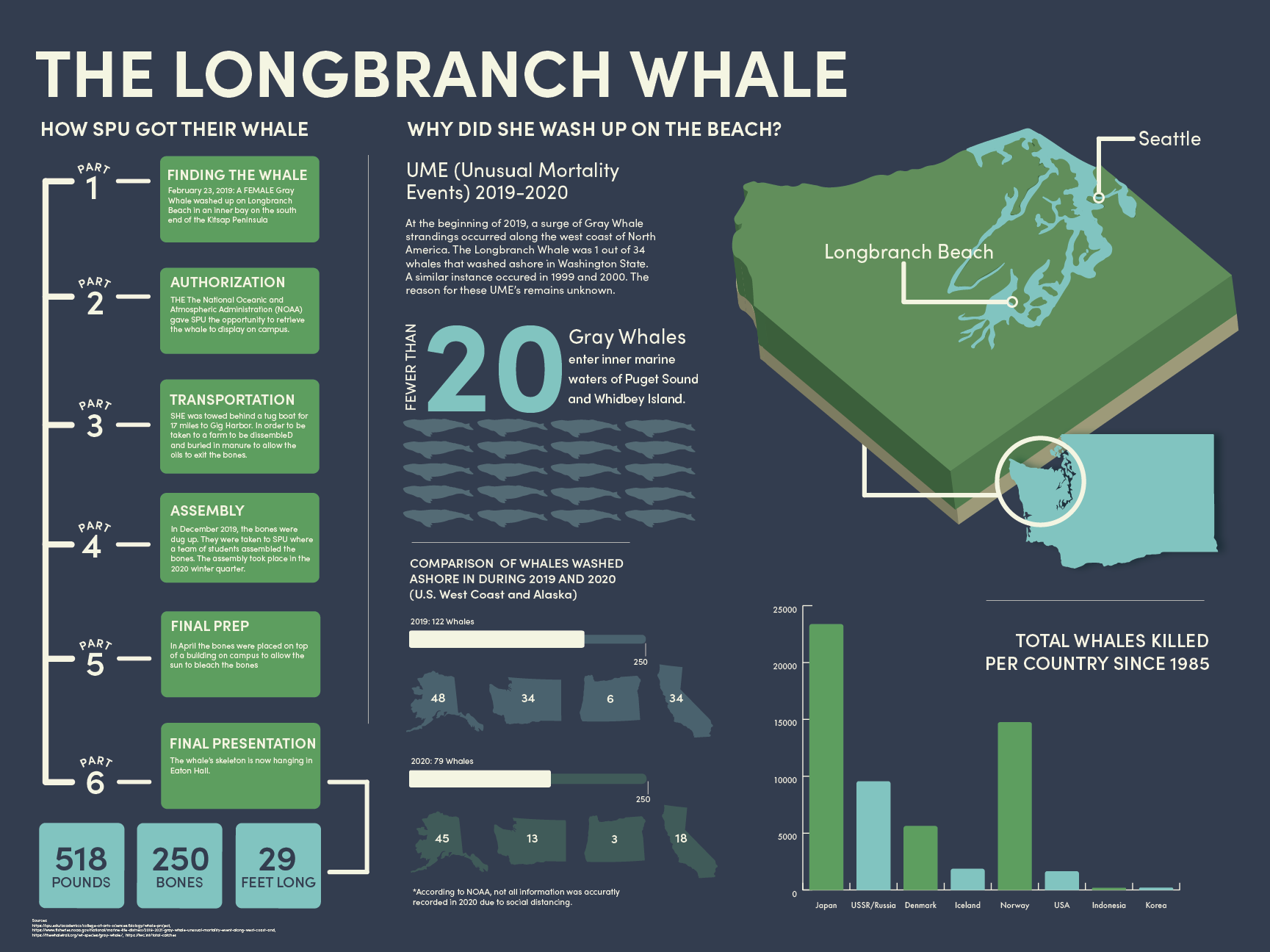SEATTLE BASED
PHOTOGRAPHER
AND
DESIGNER
Poster Design
Research & Strategy
Last year Seattle Pacific had the opportunity and permission (on behalf of the NOAA) to hang the skeleton of a Gray Whale that had washed ashore in 2019. In a senior design class, I was tasked with creating three 18” x 24” panels dedicated to the gray whale, the fishing industry’s impact on these species as well as the process and reasoning for how Seattle Pacific University received a Whale skeleton. This was one of the most intricate, time-consuming, and detailed projects I had ever completed, but I am so blessed to have had the opportunity to learn more about these beautiful creatures. This summer, I received the opportunity to hang my three panels in Eaton Hall, alongside the 29ft skeleton.

Making Intentioanl Decisions
Everything you see on this infographic was all designed and analyzed intentionally. There were many assets I ended up discarding based on not following the overall narrative to the peice.
I chose to incorperate colors that matched the Puget Sound region. Additionally, I added in Isometric illustrations in order to create more visually interesting graphics. Overall, I wanted the viewing experience to be fun and light especially since the overall tone of my research was heavy and hard information to intake if communicated properly.


1. General Information + Facts
For my first panel, I wanted to keep things focused on the species. General facts ranged from their migration patterns, diet, length, anatomy and more. The key question I seeked to aim to answer was: "How large are Gray Whales?". I used isometric illustrations to develop a fishtank with the whale directly in the center to show off the large marine mammel. I also added in a scuba diver to stress even more the average human next to the whale.

2. The Impact of Bycatch
The second panel leans heavily towards the research I conducted for 3 weeks of the quarter. A large portion of my research directly went towards learning more about Bycatch. It was something I was not familiar with prior to this quarter. One of my biggest takeaways was figuring out through my findings that much of the bycatch reports are misconstrude due to a lack of representing data to point to when unintentional species get caught in nets. The key question I hoped to answer through this infographic was how does the commercial fishing industry pose a threat to whales?

3. The Process
In my last panel, I wanted to tell a narrative on how SPU aquired their Whale skeleton. I thought it would be interesting to not only share a timeline, but also share generally where the whale washed up in comparison to where SPU is.